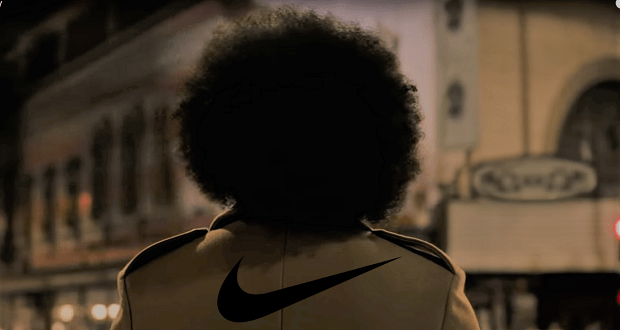
The term “multiracial” points toward an individual being of mixed racial, ethnic, or cultural descent. In the United States, multiracial individuals have a unique set of experiences. They can be perceived and treated differently even by those who share much of their background. The way they look, speak, dress, and act can cause others to see them in a certain way, which we have seen much of in the past few years of this VUCA world.
Compared to single-race individuals, multiracial people have a wider variety of ways to define their ethnic identity. For example, a multiracial person who has two or more races could choose to identify exclusively as one race or identify with both groups. Another option would be to go beyond the standard individual race options and identify as “multiracial,” a category that defines ethnic characteristics in terms of the shared experiences of people who are multiracial, as distinct from individual race groups.
Cultural and ethnic group variations have a major impact on children’s social maturity and development. The function of a given child’s heritage in their identity development is affected by their family history, and by their personal understanding of social context and environment (Gaither, 2015). Children and their families need help and training to aid them in acquiring a positive self-concept. To make this possible, we need more access to literature that draws on these unique experiences of multiracial children in their identity developments including challenges, feelings, and their authentic journeys.
Benefits of Multicultural Literature
The Diverse BookFinder is a comprehensive collection of children’s picture books featuring Black, Indigenous and/or people of color (BIPOC). The mission of the Diverse BookFinder is to provide data and research that is accessible for teachers, educators, students, libraries, etc., to be able to diversify their book collections. It allows them to see what kinds of books they have in their collections, as well as areas where they could improve. The Diverse BookFinder identifies trends in representation of BIPOC by looking at who is represented, as well as how they are represented in their growing collection of thousands of children’s picture books. There is a Collection Analysis Tool (CAT) which is a free, online tool designed to help libraries diversify their picture book collections. Within the tool, there are filters to look at specific data, such as Year, State, Library Type, Library Location, Race/Culture, and Book Category.
The Diverse BookFinder data has revealed that the majority of books containing multiracial children are “Any Child” books. This category refers to books that contain BIPOC, but their race, culture, or ethnicity are not essential to the plot and could be changed without altering the storyline. Failure to recognize race, culture, and ethnicity while presenting a brown skinned and/or racially ambiguous character is not truly representative or supportive of these groups.
Failure to recognize race, culture, and ethnicity while presenting a brown skinned and/or racially ambiguous character is not truly representative or supportive of these groups. Click To TweetIn the United States, the number of biracial couples, and therefore bi/multiracial children is growing. Holding a bicultural or multicultural identity can be exceedingly difficult for children when they struggle to understand their identities. Most books containing biracial characters do not make their identity salient to the plot. Even though these types of books may allow the child to see that they can be like other children and not constantly have to be stressed about identifying with or embracing all their identities, it may send the wrong message to these children: that people like them do not want to or cannot make a strong ethnic, cultural, or racial identification.
Biracial and multiracial children can also experience strife when people’s interpretations of their various identities conflict or cause harm, which is a reality for many. Although research about multiracial people is limited, we know that multiracial people can, and often do, identify differently in different settings, which suggests that they may be more sensitive to social contexts than their monoracial peers (Gaither, 2015). This is why it is important that there is more literature available about these experiences in order to show these children that they are not alone and that there are others like them going through many of the same experiences and feelings. It can also open the conversation at a young age to make children feel more comfortable and confident in their identities. Furthermore, representation of multiracial children can educate monoracial children about the experiences of their multiracial peers.
Multicultural literature is important for children of color so they can see themselves represented, but it also benefits all children by helping to foster positive racial identity development and simultaneously reducing harmful racial biases. The use of cross-cultural books to engage in healthy conversation about race, culture, and difference is especially useful for teaching children. The disparities in racially diverse literature highlights how children of color today are often not able to see themselves represented. Rudine Sims Bishop (1990) coined the ways in which multicultural books can serve as “windows, mirrors, and sliding doors” for children. Windows allow the children to look at an unfamiliar landscape, mirrors allow children to see themselves reflected in the story, and sliding doors allow children to enter a world different from their own.
Multicultural literature is important for children of color so they can see themselves represented, but it also benefits all children by fostering positive racial identity development and reducing harmful racial biases. Click To TweetDiversifying books is incredibly important because they can assist in disputing harmful stereotypes and fostering healthier learning environments for children of color. There are various messages that students receive about race that come from their surrounding environment, parents, teachers, and peers. Students can benefit from the integration of multicultural literature in their education by feeling a sense of belonging and representation, facilitated learning about cultures, acceptance of differences, and increased knowledge and awareness of other cultures, races, and ethnicities. Collection of multicultural resources and literature is a form of advocacy for students and educators. It is important to not only include multicultural literature in a library collection but also to integrate these materials into the curriculum with facilitated learning about different races and cultures.
Overall, the inclusion of these materials in library collections and curriculums can help to build more cohesive and accepting school communities. The lack of literature that represents this growing demographic of people is problematic because as this number continues to grow, more children will continue to not see themselves represented in the stories they read.
The Problem with Colorblindness
Another aspect to consider when discussing the lack of literature surrounding multiracial individuals is the ideology of colorblindness. Colorblindness is a popular diversity approach or ideology that, on the surface, reflects pro-diversity intentions but in practice suppresses diversity and elevates sameness. For decades, society has adopted colorblindness as a method to avoid discriminating based upon race. Previous research has shown that colorblind ideology has been harmful to children of color, as blindness to their race does not allow for the celebration of their difference, culture, and heritage (Williams, 2011; Guilfoyle, 2015). The colorblind ideology asserts that the best way to fight discrimination is to treat everyone the same way regardless of differences (Williams, 2011). This is problematic because white people are less likely to experience disadvantages due to their race, and this type of ideology maintains their dominance in society.
Colorblindness is a popular diversity approach or ideology that, on the surface, reflects pro-diversity intentions but in practice suppresses diversity and elevates sameness. Click To TweetRace certainly does matter, in the U.S. and globally. It can influence opportunities, perceptions, income, and much more. In a society claiming falsely to be colorblind, white people can effectively ignore racism, justify the current social order, and feel more comfortable with their privileged standing in society. For racially marginalized individuals, this ideology may cause them to experience things differently, since they are regularly encountering strife due to their race. Colorblindness fosters an environment that denies their negative racial experiences, rejects their cultural heritage, and invalidates their unique perspectives. Colorblind messages can also cause stress in ethnic minorities, resulting in decreased cognitive performance. A multicultural approach is preferred over a colorblind approach because it acknowledges and brings awareness to difference in a positive manner (Williams, 2011).
Multiracial individuals often must deal with others questioning their racial background, which is associated with increased difficulty in forming a social identity and having to 'choose sides.' Click To TweetDespite the popularity of colorblind ideology, a common experience among biracial individuals is being asked, “What are you?” by strangers in reference to their identity (Gaither, 2015). Unlike mono-racial minorities, multiracial individuals often must deal with others questioning their racial background, which is associated with increased difficulty in forming a social identity. Some have compared this experience to having an identity crisis because they face difficulty in “choosing sides” when others do not acknowledge their racial identity. Therefore, multiracial individuals also report the constant social pressure of having to “choose” one of their racial groups, whether due to social context or societal pressures to conform to a monoracial category. Many multiracial individuals are also racially ambiguous in appearance, which can increase confusion surrounding social identity development (Gaither et al, 2018). The current lack of multicultural materials and inaccurate representation of multiracial individuals in books reflects colorblind ideology because it denies multiracial children the opportunity to see themselves represented.
The lack of multicultural materials and inaccurate representation of multiracial individuals in books reflects colorblind ideology because it denies multiracial children the opportunity to see themselves represented. Click To TweetRepresentation and Nuance Will Support Multiracial People and Communities
Research affirms that multiracial individuals have unique experiences regarding their racial identification. They are likely to experience tension and confusion when being asked and questioned by others as to “what” they are. To help reduce the likelihood of people being asked these questions, it is important to educate all children about the realities and experiences of multiracial individuals. As this community continues growing in the United States, these children deserve to have literature that will help them to understand their own identities, assist in developing their racial identity, and support them in understanding their differences from monoracial individuals.
Multiracial individuals likely experience tension and confusion when questioned as to 'what' they are. It is important to educate all children about the realities and experiences of multiracial individuals. Click To TweetIt is also critical to teach multiracial people that it is okay to be racially “fluid” and switch back and forth between emphasis placed on their various identities in different contexts, and to embrace their cultural knowledge. It is important to recognize the difficulties of multiracial individuals when they choose to identify with a race that they may not visually fit into. For example, if a child has one Black parent and one white parent, but they physically appear to be darker-skinned, they may still identify as white if they choose. It is not up to others to define how an individual identifies, and especially not to dictate priority of one race over another when an individual has multiple racial identities to choose from. Teaching all children about these experiences through multicultural literature can decrease biases and beliefs about how multiracial individuals should and can choose to identify themselves in varying contexts.
It is not up to others to define how an individual identifies, and especially not to dictate priority of one race over another when an individual has multiple racial identities to choose from. Click To TweetAs a brown-skinned individual, I am interested in this data because these types of books contain characters with seemingly brown skin, but fail to bring awareness to or specify their race or culture. Growing up, I constantly wanted to be someone or look like someone that I could never be. I never saw myself represented in anything I watched or read about, and that made me envious of the things that I could not have. This caused me to develop negative feelings toward myself and my Indian culture which severely impacted my mental health and self-esteem for a long time.
Growing up, I never saw myself represented and this caused me to develop negative feelings toward myself and my Indian culture which severely impacted my mental health and self-esteem for a long time. Click To TweetI try to imagine how differently my racial identity would have developed had I seen myself reflected in different media forms when I was growing up and learning — having my experiences being visible and valued. By focusing on this topic and sharing data, I can emphasize the importance of multicultural literature as someone who has been marginalized. My own experiences have allowed me to recognize how much these messages matter and the impacts they can have on young people.
Sources:
Agosto, D. E. (2007). Building a Multicultural School Library: Issues and Challenges. Teacher Librarian, 34(3). Retrieved from https://www.researchgate.net/profile/Denise_Agosto2/publication/265237900_building_a_multicultural_school_library_issues_and_challenges/links/571393e008ae39beb87ce696/building-a-multicultural-school-library-issues-and-challenges.pdf
Bishop, R. S. (1990). Mirrors, Windows, and Sliding Doors. Perspectives: Choosing and Using Books for the Classroom, 6(3).
Bi/Multiracial/Mixed Race Collection Breakdown. (n.d.). Retrieved from
https://diversebookfinder.org/brown-skinned-collection-breakdown/
Gaither, Sarah E., et al. “Exposure to Biracial Faces Reduces Colorblindness.” Personality
and Social Psychology Bulletin, vol. 45, no. 1, 2018, pp. 54–66.,
doi:10.1177/0146167218778012.
Gaither, Sarah E. “‘Mixed’ Results.” Current Directions in Psychological Science, vol. 24,
- 2, 2015, pp. 114–119., doi:10.1177/0963721414558115.
Guilfoyle, B. M. (2015). Colorblind Ideology Expressed Through Children ’ s Picture Books: A Social Justice Issue. Jesuit Higher Education, 4(2), 37–56. Retrieved from https://epublications.regis.edu/jhe/vol4/iss2/6
Williams, M. T. (2011, December 27). Colorblind Ideology Is a Form of Racism. Retrieved from https://www.psychologytoday.com/us/blog/culturally-speaking/201112/colorblind-ideology-is-form-racism



















